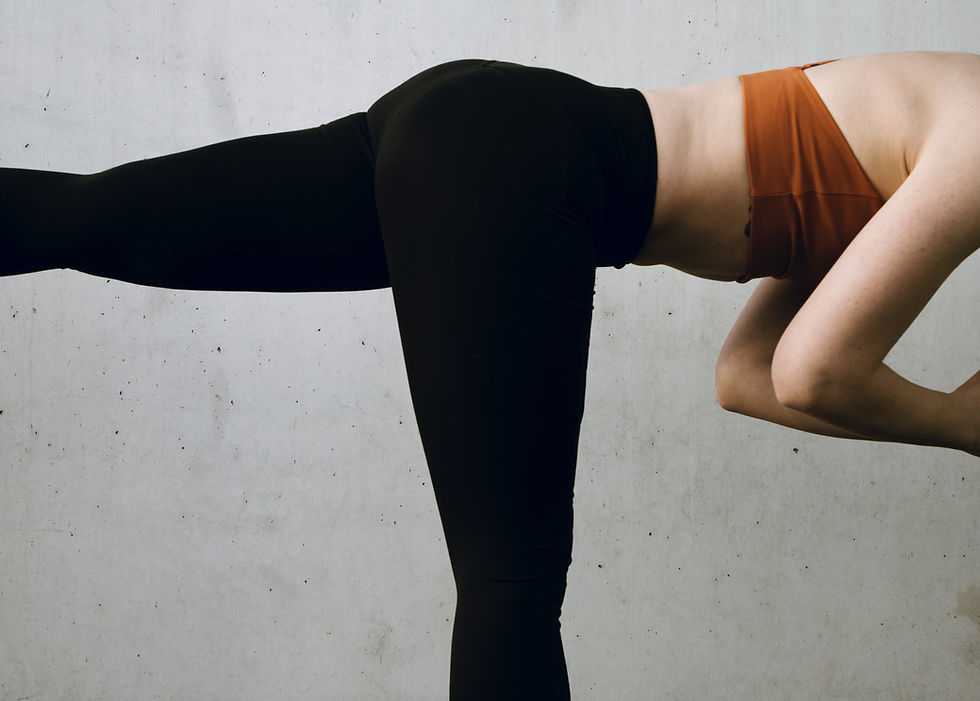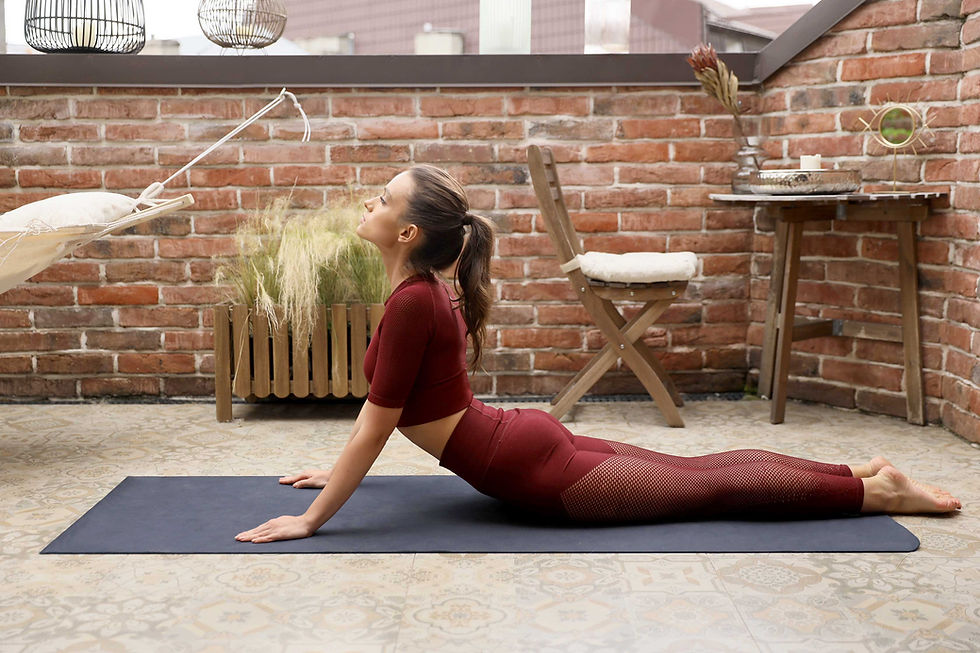Guide: Asana Categories
- Yoga

- Oct 22, 2022
- 3 min read
Updated: Apr 10, 2023
How are asanas categorized? There are some common categories which are good to learn, not only to create beautiful, balanced sequences, but also to fully understand the benefits of certain asana types. Explore our quick-guide below!

Standing asanas
Standing asanas are the poses in which you start standing up. These asanas often work on both strength and flexibility and helps us ground to the earth.
Examples of standing asanas:
Vrkshasana
Warrior I, II, III
Tadasana
Uttitha Trikonasana

Seated asanas
Seated asanas work on our posture as well as our flexibility in our hips, activates the muscles around your spine. Also keeps us grounded by activating our root chakra, which also stimulates our Kundalini energy to move upwards.
Examples of seated asanas:
Dandasana
Vajrasana (Thunderbolt pose)
Sukhasana (Easy pose)
Pachimottasana (Seated forward fold)

Supine asanas
Supine asanas are performed laying on your back and are usually preparatory postures for backbends, working on flexibility on your lower body and are mostly very calming. Supine asanas are mostly preformed in the end of a yoga sequence.
Examples of supine asanas:
Savasana
Supta Padangusthasana
Matsyasana
Supta Virasana
Suptabaddhakonasana

Prone asanas
Prone asanas are performed on your belly and stimulates your middle chakras and meridians, such as liver and kidneys. Most prone asanas work on your back, legs and hamstrings and work as a counterpose for backbends.
Examples of prone asanas:
Bhujangasana (Cobra )
Balasana (Childs pose)
Ashtangasana (8 limbed pose)
Dharandundasana (Bow pose)
Urdhva mukhva svavasana (Upward facing dog)

Backbending asanas
Backbends work on your flexibility and often stimulates most chakras in the body. Often used as counterposes for forward folds/bends. Backbends are performed later in the yoga sequence after your body is fully warmed up.
Examples of backbending asanas:
Bhujangasana (Cobra)
Supta Anuvittasana (Backbend Over Bolster Hands Behind Head pose)
Chakrasana (Wheel pose)
Utthita Tadasana (Extended mountain pose with backbend)

Balancing asanas
Balancing poses are performed standing on one foot which helps you with you posture. You often have to focus and concentrate only on your balance in these asanas, which translate to the practicing focusing the mind. Usually near the end of the sequence, often as a peak-pose, right before calming down with slower asanas.
Examples of balancing asanas:
Utthita Hasta Padangusthasana (Standing Hand To Big Toe Pose Forward Bend)
Utthita Hasta Padangusthasana (Standing Hand To Big Toe Pose)
Tadasana Janu Hastasana (Standing Hand To Knee Pose)
Natarajasana (Dancer pose)

Core strengthening asanas
Working on core strengthening asanas will not only work on your core, but also your back and a whole other muscle groups in your body. Having a strong core in Yoga is very important as we are working on our spine in all asanas. Strong core muscles will help you to keep a straight spine and a great posture. Great for warm-ups in the beginning of the sequence or as a part of a flow.
Examples of core strenghtening asanas:
Navasana
Chaturanga dandasana

Forward bending asanas
Forward bending asanas can be performed sitting or standing. Always be careful to not overstretch your hamstrings. Spiritual meaning is to surrender and often effective in sequences handling anxiety, stress or fatigue.
Examples of forward bending asanas:
Uttanasana A & B
Prasarita Padottanasana (Intense leg stretch pose)
Parsvottanasana (Single leg forward fold)
Marichyasana A, B

Hip opening asanas
Hip opening asanas work on your 6 muscles (gracilis, pectineus, adductor longus, adductor brevis, adductor magnus, and adductor minimus muscles) around your hips which are often very stiff, as most of us are office workers. Often performed in a flow, or as a warmup but generally no intense hip openers towards the end of a yoga sequence.
Examples of hip opening asanas:
Butterfly
Warrior I, II, III
Parsva Upavistha Konasana
Anjaneyasana (Low lunge)

Twisting asanas
Asanas where you twist your body will work on you digestive system and give you a great stretch in the muscles around the spine. Generally performed in all parts of a sequence.
Examples of twisting asanas:
Vasisthasana
Marychasana B
Parivrtta Virabhadrasana (Revolved Warrior Pose)
Trikonasana (triangle pose)

Sidebending asanas
Side bends focus on your core muscles, and is also elongating the spine. Great stretches to get the prana moving in your body. Generally performed in a flow, or as a full body balancing asana in the middle of a sequence.
Examples of side bending asanas:
Trikonasana
One legged Uttitha parvankonasana
Half moon pose
Reversed triangle pose
Revolved head-to-knee-pose



Comments